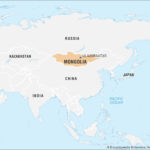It’s a common misconception to think of California’s fire season as limited to just the summer heat. In reality, some of the most destructive months for wildfires in California are actually September and October. This is when the infamous Santa Ana winds are at their peak. While July might see a higher number of fire ignitions, historical data reveals that the fires occurring in September and October tend to be significantly more damaging in terms of acres burned. The combination of strong autumn winds and extremely dry vegetation creates conditions ripe for rapid fire spread and devastation.
When Was the Largest Wildfire in California History?
The record for the largest wildfire in California’s history belongs to the August Complex fire. This massive event began in mid-August of 2020, sparked by a series of lightning strikes. Multiple fires ignited and eventually merged into one enormous blaze, becoming what is known as a “complex” fire. It burned relentlessly for months, and it wasn’t until November that the final embers were extinguished, marking a prolonged period of destruction and highlighting the severity wildfires can reach.
Is Fire Season Different in Southern and Northern California?
Given California’s vast size and diverse geography, it’s logical that the wildfire season varies across different regions of the state.
-
Southern California: This region typically experiences a longer fire season. The first substantial rainfall, which can help reduce fire risk, usually doesn’t arrive until November or even December. This late start to the rainy season means that Southern California remains susceptible to wildfires for a greater portion of the year.
-
Northern California: Northern California generally benefits from an earlier start to the wet season. Rain usually begins in October, effectively shortening the wildfire season compared to the southern part of the state. This earlier rainfall helps to dampen vegetation and reduce the overall fire danger period.
How Wildfires are Impacting Home Insurance in California
The increasing frequency and intensity of wildfires are having a significant impact on the home insurance landscape in California, particularly for homeowners residing in fire-prone areas. Many are facing increasing difficulty in finding, maintaining, and affording insurance coverage that adequately protects them against wildfire damage. This situation leaves homeowners with limited options to secure necessary protection:
-
The California FAIR Plan: This plan serves as a safety net, acting as the insurer of last resort for both homeowners and renters who are struggling to find coverage in the traditional insurance market. It’s a collaborative initiative involving insurance companies authorized to operate in California, designed to provide basic fire insurance when other options are unavailable.
-
Surplus Lines Carriers: Another avenue for obtaining wildfire insurance is through surplus lines carriers, such as Lloyd’s of London. These carriers operate with significantly less regulatory oversight compared to mainstream insurance companies. While they can offer coverage in high-risk areas, it’s important to note that they may come with different terms, conditions, and potentially higher costs.


